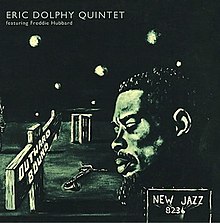
Eric Allan Dolphy Jr. was an American jazz multi-instrumentalist and bandleader. Primarily an alto saxophonist, bass clarinetist, and flautist, Dolphy was one of several multi-instrumentalists to gain prominence during the same era. His use of the bass clarinet helped to establish the unconventional instrument within jazz. Dolphy extended the vocabulary and boundaries of the alto saxophone, and was among the earliest significant jazz flute soloists.

John Arthur "Jaki" Byard was an American jazz multi-instrumentalist, composer, and arranger. Mainly a pianist, he also played tenor and alto saxophones, among several other instruments. He was known for his eclectic style, incorporating everything from ragtime and stride to free jazz.

Out to Lunch! is a 1964 album by jazz multi-instrumentalist Eric Dolphy. His only recording on Blue Note as a leader, it was issued as BLP 4163 and BST 84163. Featuring Dolphy in a quintet with trumpeter Freddie Hubbard, vibraphonist Bobby Hutcherson, bassist Richard Davis and drummer Tony Williams, it was generally considered by critics as one of the finest albums issued on Blue Note, and widely viewed as one of the high points of 1960s avant-garde jazz. The album cover designed by Reid Miles features a photo of a "Will Be Back" sign displayed in a shop window showing a seven handed clock.

The Blues and the Abstract Truth is an album by American composer and jazz saxophonist Oliver Nelson recorded in February 1961 for the Impulse! label. It remains Nelson's most acclaimed album and features a lineup of notable musicians: Freddie Hubbard, Eric Dolphy, Bill Evans, Paul Chambers and Roy Haynes. Baritone saxophonist George Barrow does not take solos but remains a key feature in the subtle voicings of Nelson's arrangements. The album is often noted for its unique ensemble arrangements and is frequently identified as a progenitor of Nelson's move towards arranging later in his career.

Eric Dolphy at the Five Spot, Vols. 1 and 2, is a pair of jazz live albums documenting one night from the end of multi-instrumentalist Eric Dolphy and trumpeter Booker Little's two-week residency at the Five Spot jazz club in New York. This was the only night to be recorded. The engineer was Rudy Van Gelder.

Iron Man is an album by American jazz multi-instrumentalist Eric Dolphy, recorded in 1963 and released by the Douglas International label in 1968. The album was reissued on disc two of Musical Prophet: The Expanded 1963 New York Studio Sessions, released in 2018 by Resonance Records.

Out There is an album by Eric Dolphy which was released by Prestige Records in September 1961. It features Dolphy in a quartet with bassists Ron Carter and George Duvivier, and drummer Roy Haynes. It was Dolphy's second album as a leader, released following his time with Charles Mingus.
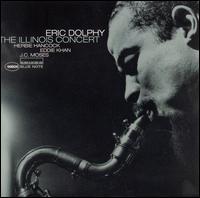
The Illinois Concert is a live jazz recording of a concert by Eric Dolphy, released in 1999 by Blue Note Records. The album was recorded on March 10, 1963, at the University of Illinois in Champaign, Illinois and features Dolphy with pianist Herbie Hancock, bassist Eddie Khan, and drummer J.C. Moses. The quartet is joined by the University of Illinois Brass Ensemble for one track, and by the University of Illinois Big Band for the final track. The tape of the concert, which was recorded for radio broadcast, did not surface until 1999, when it was mentioned in a chat room and was eventually brought to the attention of Michael Cuscuna.
George Andrew Tucker was an American jazz double-bassist.
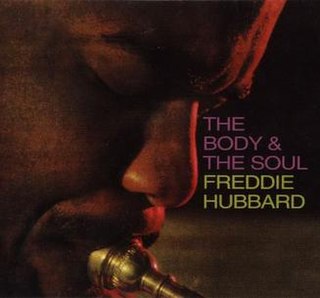
The Body & the Soul is an album by trumpeter Freddie Hubbard recorded in 1963 as his second and last release on the Impulse! label. It features performances by Hubbard with an orchestra and string section, and with a septet featuring Curtis Fuller, Eric Dolphy, Wayne Shorter, Cedar Walton, Reggie Workman and Louis Hayes.

Far Cry is the third album by jazz musician Eric Dolphy, released in 1962 on New Jazz Featuring a quintet co-led with trumpeter Booker Little, it is one of the few recordings of their partnership. Pianist Jaki Byard, bassist Ron Carter and drummer Roy Haynes all return from earlier Dolphy albums. This was a busy time for Dolphy- he took part in Ornette Coleman's Free Jazz session and recorded this album on the same day, and had participated in the Jazz Abstractions project the previous day.

Here and There is a jazz album by multi-instrumentalist Eric Dolphy. It was originally released in 1966 on the Prestige label as PRLP 7382. It contains tracks recorded on three separate dates, in different locations. Mal Waldron's "Status Seeking" and Dolphy's solo bass clarinet version of Billie Holiday's "God Bless the Child" were recorded on July 16, 1961 at the Five Spot in New York City as part of the concert that was documented on the At the Five Spot recordings. "April Fool" and "G.W. " were recorded on April 1, 1960 at Van Gelder Studio in Englewood Cliffs, New Jersey as part of the session that yielded Outward Bound, Dolphy's first album as a leader. "Don't Blame Me" was recorded on September 6, 1961 in Berlingske Has, Copenhagen, Denmark during Dolphy's second European tour, as part of the sessions that produced Eric Dolphy in Europe Volumes 1-3.

Cornell 1964 is a live album by jazz bassist and composer Charles Mingus, featuring multi-instrumentalist Eric Dolphy. It was recorded at Cornell University in Ithaca, New York, on March 18, 1964.

Town Hall Concert is a 1964 live album by the jazz bassist and composer Charles Mingus. It was recorded in New York City at The Town Hall on April 4, 1964. "So Long Eric" is a 12-bar blues that got its name after Eric Dolphy informed Mingus he would be leaving the band to stay in Europe before a concert in Oslo. "Praying With Eric" is more commonly known as "Meditations On Integration". The album was originally released on Mingus' own Jazz Workshop label and subsequently rereleased on Fantasy as part of their Original Jazz Classics series.

Out Front! is an album by pianist Jaki Byard recorded in 1964 and released on the Prestige label.
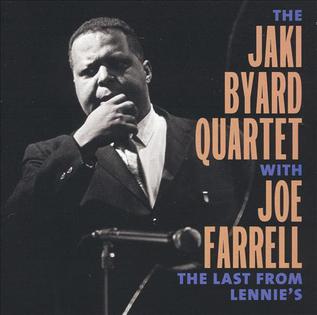
The Last from Lennie's is an album by pianist Jaki Byard's Quartet recorded in 1965 at the same performances that produced Jaki Byard Quartet Live! and first released on the Prestige label in 2003.
Live in '65 is a DVD of an Art Blakey concert in Paris in 1965.
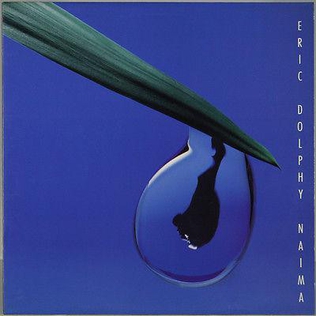
Naima is an album by American musician Eric Dolphy, released in Europe in 1987 by the Jazzway label, and later by the West Wind label. Four of the five tracks were recorded on June 11, 1964 in a Paris studio for radio broadcast, nine days after the Hilversum session that yielded Last Date, and eighteen days before Dolphy's death. The remaining track, a duet with bassist Ron Carter, was recorded in New York City in November 1960, during a session which also produced three of the tracks released on Other Aspects.
Richard Slater Jennings, also known as Prophet Jennings or simply Prophet, was a journalist at several African-American newspapers and a self-taught painter whose artwork was used on the covers of jazz albums by Thelonious Monk, Eric Dolphy, and Max Roach in the 1960s. He was a friend and adviser to musicians and other entertainers who gave him the name "Prophet" for his sage advice and philosophical sayings.

Dash One is an album by Eric Dolphy consisting of alternate takes of four pieces recorded for other albums.
